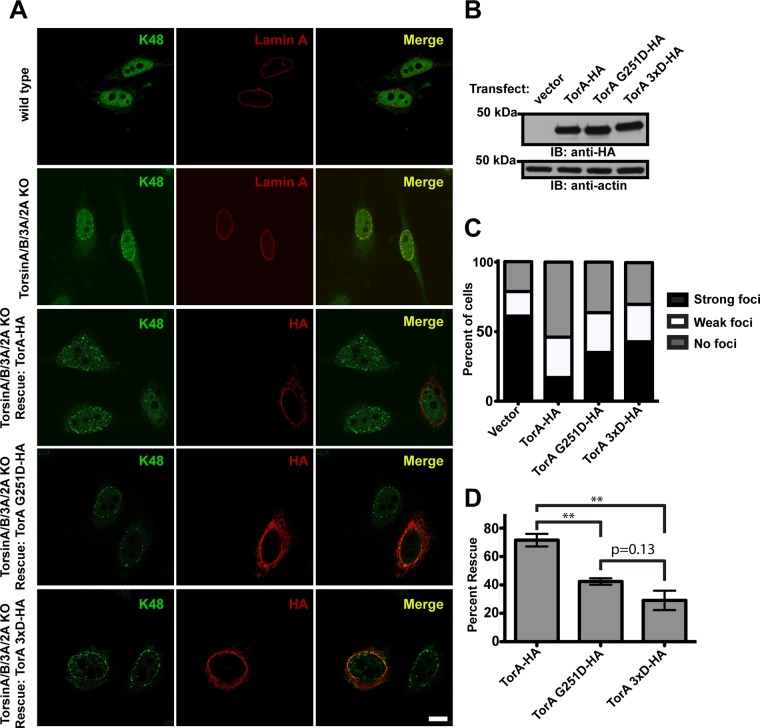FIGURE 4:
Torsin G251D and 3xD “back” interface mutants do not rescue the K48-linked ubiquitin accumulation phenotype in the nuclear periphery. (A) Confocal images of wild-type or Torsin-deficient HeLa cells stained with an anti-K48 ubiquitin antibody. In the top two panels, wild-type or Torsin-deficient cells were costained with lamin A. In the bottom three panels, wild-type or mutant TorA was transfected into Torsin-deficient cells and costained with an anti-HA antibody. Scale bar is 10 μm. (B) Immunoblot of lysates from the bottom four panels of part A using an anti-HA antibody. Actin was used as a loading control. (C) Graph showing the percent of cells exhibiting K48 ubiquitin foci at the nuclear periphery with different rescue constructs. (D) Graph showing the percent rescue of the K48 ubiquitin accumulation with different rescue constructs. Error bars show the SEM. **p < 0.01. In both graphs, the percent reported is an average of three independent experiments of at least 100 cells each.

